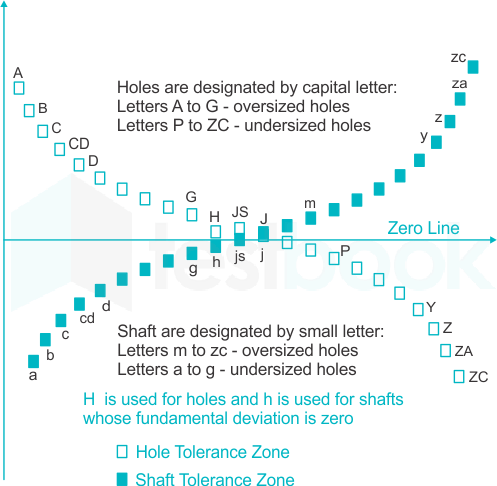- Capabilities
-

CNC Machining
Tight tolerance and 20+ finishes 3, 4 , 5 axis, as fast as 2 days -

Sheet Metal Fabrication
High-precision, on-demand sheet metal cutting and bending. -

3D Printing
SLA, SLS,MJF,SLM, FDM 3d printing with post treatment. -

Vacuum Casting
Production quality parts without the tooling investment.
-
- Solutions

Rapid Prototyping
Fastest lead time of high-quality prototypes at minimal cost.

Low Volume Production
From one-off prototyping to low-volume production.

Mechanical Assembly
Custom assembly for project-specific needs.

Custom Package
Ready to help you prompt your brand.
- Sources

Materials
Select from 100 more types of metals and plastics.

Finishes
Select from 20 more types of surface fishes.

Industries
Providing precision machining and manufacturing solutions.

Cases
How we assist our clients in bringing their projects to fruition.
- Company

Quality Assurance
Consistent quality, every time.

About Us
Your go-to manufacturer for custom parts.

Newsroom
Learn updated news about ECOREPRAP.
CNC Machining Tolerances, the Complete Guide in 2024
Updated: May 05, 2024
Picture this: you are an expert in CNC machining tolerances and can hand-pick the most appropriate accuracy for any machining process and any material. Sounds much like a superhero power, doesn’t it?
To grant you such proficiency, we created a detailed guide for CNC machining tolerances. It covers everything from the basic definition of machining tolerances to descriptions of their common types. As a bonus, we outlined useful recommendations for choosing appropriate tolerances.
1. What is Meant by Tolerance in CNC Machining?
How the Concept of Tolerance Has emerged from CNC Machining
For starters, CNC machining is the process of manufacturing a part of a raw workpiece. It is done by automated equipment units and cutting tools that follow the programmed path. It is how a particular shape or design can be obtained.
Unfortunately, as none of the human beings can avoid mistakes, none of the CNC centers can operate with 100% accuracy all the time. It leads to the necessity to consider a certain degree of error as appropriate and just operate with it further.
The Definition of CNC Machining Tolerances and Related Subconcepts
o, let’s get down to business. Machining tolerance is also well-known for dimensional accuracy. It is basically the amount of permitted variance in the dimensions of a component crafted. In other words, it is how significantly a CNC machine can be mistaken.
There is always a particular range within which a specific accuracy value is acceptable. You may have heard of this range as a distance between a maximum and minimum dimensional limit for a distinct component type. In quality assurance, these limits are admissibility or acceptance criteria.
There is also a concept of sub-quality products. In the context of CNC machining, it is any finished product whose dimensions exceed the acceptance criteria.
The Way CNC Machining Tolerances Work in Real-life
Here’s how it goes: a manufacturer requires a hole in a part with a diameter of 45 mm. The given acceptance criteria are ±0.5 mm. Therefore, any part with a hole’s diameter that falls in the range between 44.5 mm. and 45.5 mm. is considered acceptable quality. In case a hole’s diameter has gone beyond the range, the part is considered sub-quality.
The range of acceptance detailed above is also called the ‘tolerance band.’ The rule of thumb is the larger the difference between the maximum and minimum dimension limits, the looser the tolerance band, and vice versa.
While a manufacturer may have its acceptance criteria for a part’s dimensions, a CNC machine unit always has a particular level of accuracy. A supplier cannot guarantee that its automated center will consistently produce parts with the required dimensions if the requirements of these criteria are exceeded. It is so because a machining center is not designed for it.
The simple truth is that if a CNC machine unit’s tolerance, claimed by a supplier, is tighter than the acceptance criteria for a component, there is no problem. However, you will need a new automated machine if a component should be manufactured with precision. A center is not designed for.

2. Why are Tolerances Important in CNC Machining?
We devoted the entire above section to create an initial understanding of how principles of machining tolerances emerged. Now you’re ready for a few examples that show the particular importance of tolerances in CNC manufacturing.
Picture this. You have bought a new phone. An exceptional and expensive one. You’d definitely want this precious piece of electronics to be protected from falls, fingerprints, and scratches. For this purpose, you have ordered a premium phone case, which was delivered to you in no time. And when you try to fit your new device in your even newer phone case, there are basically two scenarios.
The good one is when both phone and the case are completely compatible with each other and suit perfectly. You can see how tightly your phone is positioned inside the case, and all the cutouts have the same contours as your phone’s camera and fingerprint scanner. You are happy with your purchase due to the great precision this case had been manufactured with.
In the worst-case scenario, everything works the other way around. Your phone is way bigger or smaller than its case, and just cannot be well-positioned inside it. Your device’s camera and fingerprint scanner are partially blocked by inappropriate cutouts. And all that sort of stuff.
Phone cases are not that essential. But imagine we are talking about microelectronics, aircraft components, or surgery tools. As you can see, it is always better when appropriate tolerances are chosen.
3. Common Types of Tolerances in CNC Machining
The next point to discuss is common types of tolerances in computer-controlled machining. Their understanding is vital not to be confused when someone’s beginning to speak about acceptance criteria and tolerance bands in a manner you are not used to.
1. Standard Tolerances
Standard tolerance is also referred to as engineering tolerance. It is a variation with which an equipment unit can operate in a broad sense. In CNC machining, it is an error in a workpiece’s dimensions.
An International Tolerance grade provides a general classification of CNC machines, or their tooling, by the tolerance they are designed for. Here is the list of tolerances that can define the grade of a CNC machine (equipped with cutting tools or without).
- ±0.2″ or ± 5,08 mm.
- ±0.01″ or 0,254 mm.
- ±0.005″ or 0,127 mm.
- ±0.0005″ or 0,0127 mm.
As such, a supplier may claim that its automated machine has an accuracy of 0.1 mm. It is a typical variance that most CNC machine types, such as mills, lathes, etc., operate with. As you can observe, 0.1 mm. suits grade 3, based on the above scale.
Specifications regarding the basis of tolerances, deviations, and fits, are detailed in the normative international guide called ISO 286-1:2010.
Alternatively, you may use the scale detailed below that considers machine variances and the linear dimension. Linear dimension range is basically the dimensions of a part being machined.

2. Bilateral Tolerances
This one is simple. Bilateral tolerance is the zone formed by equal distribution of the acceptable variance in both dimensions. In other words, it is the permitted error or deviance, which can be accepted regardless of the direction in which the error occurred. You can see the way it works in the infographics below.
 In the basic example, the manufacturer may give a workpiece to cut a hole. Dimension of the hole, i.e., diameter, is, for instance, equal to 30 mm. Criteria of acceptance is 0.1 mm. It means that according to bilateral tolerances, any diameters between 29.95 and 30.05 are acceptable.
In the basic example, the manufacturer may give a workpiece to cut a hole. Dimension of the hole, i.e., diameter, is, for instance, equal to 30 mm. Criteria of acceptance is 0.1 mm. It means that according to bilateral tolerances, any diameters between 29.95 and 30.05 are acceptable.
The crucial point is that upper and lower limits are distributed from given dimensions equally.
3. Unequally Disposed Tolerances
Typically, limits for each direction are indicated in specifications for a particular component. For instance, the diameter of a hole to be drilled is 30.0 mm. and the tolerance required is 0.1 again. Upper and lower limits may look like 29.99 and 30.09, or 29.93 and 30,03, respectively, or anything like this.
The crucial point is that the upper and lower limits are not distributed from given dimensions equally.

4. Unilateral Tolerances
Unilateral tolerances also should be mentioned in the specifications for a component, as any manufacturer sticks to bilateral tolerances within an equipment unit’s standard errors. Unless otherwise is not mentioned.
A respective example is the 30 mm. diameter hole. Tolerance is 0.1 mm one more time. In this case, upper and lower limits would be either 29.9 mm. and 30.0 mm., or 30.0 mm. and 30.1 mm., respectively.
The crucial point is that the entire distribution is allowed in one direction only, while in the other one any error is not acceptable et al.

5. Limit Tolerances
You may have heard of limit tolerances as of hole & shaft tolerances. Basically, this system divides standard errors into two categories: hole and shaft. They are given particular labels, with which you can familiarize yourself from the infographics below.

The thing is, these standards needed to fit parts in each other. For this purpose, the dimensions of a hole are always larger than the ones of shafts. For instance, it may be requested that the base dimension of a hole is 30.0 mm., and upper and lower limits are 30.0 mm. and 30.1 mm. only.
At the same time, a shaft required may be 30 mm. in diameter, and its upper and lower limits would be 29.9 and 30.0 mm only. It is done for the purpose that a shaft is always smaller than a hole because any machine unit is mistaken to a defined extent. But, this mistake will only help fit the shaft in a hole.
The crucial point is that a hole is always permitted to be slightly higher in size than basic requirements demand, while a shaft is slightly lower in size.
6. Geometric Dimensioning and Tolerancing
In common sense, geometric dimensioning and tolerancing (GD&T) do not define particular variances from the base dimension. It rather assists in indicating such tolerances in specifications.
GD&T is a system that incorporates symbols that define geometric characteristics of a component, its modifiers, tolerances, and datum references (a particular line, point, or axis). You can see an example of a coded requirement for a component to be manufactured in the infographics below.

Reference Post: 4 Types of CNC Machining Offset You Need to Know
4. Tips for Choosing the Tolerances
But here’s the exciting thing. We determined five major aspects that should be considered while deciding which of the described tolerances best suits your purposes. It is also correct for selecting standard errors and determining acceptance criteria for particular components.
1. High costs of tight requirements
Requesting tighter requirements than basic ones (0.1 mm. for CNC machining, for instance) is associated with high expenses in 100% of cases. The simple explanation is that stricter requirements trigger a sequence of actions needed to comply with given acceptance criteria.
Additionally, a manufacturer may not have a CNC machine that is precise enough. As mentioned multiple times throughout the text, all automated centers have an error they had been designed with. The more expensive the equipment unit is, the higher its grade and the lower variance can be supported, respectively.
Even if a manufacturer has a CNC machine precise enough to fulfill your strict requirement, it will definitely require its settings to be adjusted. This process is time-consuming and also contributes to the final production costs.
2. Inspection
This aspect that impacts costs of tight tolerance requirements is based on the Quality Assurance policies. Basically, any component manufactured by CNC machines must pass a control that confirms or rejects their compliance with specifications.
The major difficulty with unjustified tolerances is that higher resources are required to check parts for their quality. Inspection machines should also be adjusted, leading to the deterioration of turnaround time.
In the worst-case scenario, a manufacturer may not have inspection machines with a suitable grade. Most precise equipment units are needed to find the slightest discrepancies between specifications and dimensions obtained.
3. Choice of manufacturing methods
It is a broad topic to discuss, but we tried to explain the key nuances briefly. Tolerances may depend on the manufacturing method chosen. For instance, drilling may be more precise than turning or milling.
Equipment units with a different number of axes fulfill distinct functions and also may have different basic tolerances. Additional operations such as finishing may impact the initial dimensions, which also should be considered.
In essence, there are numerous manufacturing operations, and for every distinct one, appropriate tolerances are chosen, which impact the costs of finished components.
4. Dependency between the tolerances and the material
The mechanical properties of a material to be manufactured also define what tolerances are more or less achievable. Hardness, density, abrasiveness, and heat stability, are the major factors that define the degree of a material’s responsiveness to stress applied.
You would be surprised if you knew how the costs of compliance with non-standard requirements for softer and harder metals differ. And, that is more confusing, there is no a certain dependency because any property of metal may make the material easier or harder to machine with a minor error.
5. Cases when the choice of tight tolerances is due
In some situations, you have no other option but to request a manufacturer to tighten the variances. It is mainly done for innovative prototypes that should be perfectly machined to be appropriately tested.
Alternatively, you will always need CNC machines to operate with extra small errors (±0.0005″) when you produce electronic components.
Finally, in some designs and machining operations, tolerances may be adjusted by the change of cutting tools. This way, you may select the tightest tolerances possible without being additionally charged, as a manufacturer does not waste resources to respond to your request.
5. Final Take
So, what does all this mean? Tolerances are a crucial aspect of CNC machining. The choice of these variances mostly depends on CNC machines’ capacities and requirements for a particular component.
You are highly recommended to justify tolerances before requesting the manufacturer to craft a component according to strict specifications. In many cases, basic CNC machining tolerances suit well, while unnecessary tightening of them leads to extra expenses.
Let's get your projects started, together!
Get custom parts machined in high quality, delivery on time.






